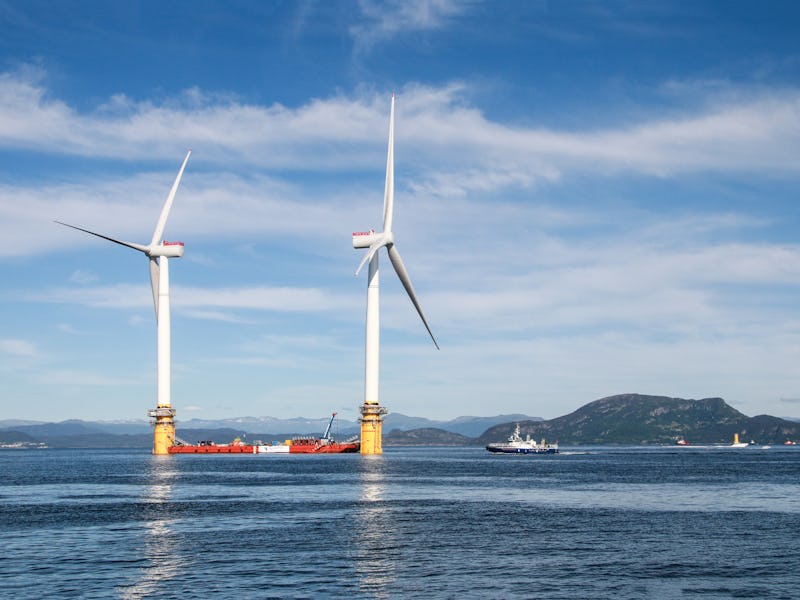Open-Ocean Wind Farms Could Meet Current Global Energy Demand
Researchers from Carnegie Mellon University have made a critical discovery.

Ocean-based wind farms in the North Atlantic could generate enough power in winter to meet all of humanity’s current energy needs, a study published Monday found. The research, which explains why wind speeds are faster in the ocean, is a welcome boost to the nascent area of floating wind farms and could represent a major step forward in the journey to move the world away from fossil fuels.
“We found that giant ocean-based wind farms are able to tap into the energy of the winds throughout much of the atmosphere, whereas wind farms onshore remain constrained by the near-surface wind resources,” says Anna Possner, a postdoctoral researcher that works in Ken Caldeira’s lab at Carnegie Mellon University. The two researchers have had their findings published in the journal Proceedings of the National Academy of Sciences.
At this stage, floating wind farms are a relatively new and unproven idea. The world’s first turbines hit the deep waters this summer, when five were placed off the western coast of Norway to get tugged out near north-east Scotland. These initial versions use an underwater ballast 255 feet tall along with mooring lines that attach to the seabed.
These turbines would greatly improve over existing offshore farms. The latter need to be affixed to the floor at about 130 feet deep at most, which severely limits their location and means around 60 percent of United States offshore wind energy is inaccessible.
Caldeira and Possner’s research shows why these floating farms are necessary. Although it was already understood that wind speeds are faster over oceans than land, meaning ocean wind farms could theoretically harness up to five times more energy than land-based farms, it was unclear why the speeds were faster at sea. If ocean winds are faster because there’s no buildings, for example, it’s probably not a smart idea to start building stuff.
It turns out there is something special about oceans that make them good for wind power. Some parts of the North Atlantic have heat coming out, and this difference in temperature pulls the winds from the upper atmosphere down to turbine levels.
It’s this interaction between the upper atmosphere and the ocean surface that means ocean turbines speed ahead compared to land-based offerings. In the team’s model, they compared Kansas land wind farms to hypothetical farms out near the heat areas, and found that while the former collects around 1.5 watts per square meter, the latter can collect around six watts even with seasonal fluctuations.
Watch Caldeira explain the team’s research here:
The implications are fascinating. With an open-ocean wind farm of around three million square kilometers, humanity could meet its current annual global energy demand of 18 terawatts with clean, renewable energy. However, ocean wind output is seasonal, and although the team found that a North Atlantic wind farm could cover humanity’s needs in winter, in summer that same farm may only cover Europe or the United States’ demands.
Such a project would also require major investment. Because floating wind turbines are a new idea, they’re also expensive. The first turbines that went to sea this summer, dubbed the Hywind project, cost around $260 million and power around 20,000 homes. A study from the Carbon Trust found while floating turbines could offer a lower cost of energy than fixed alternatives, the upfront cost would jump from $3.9 million per megawatt for fixed to $4.7 million per megawatt for ocean.
It may be windy out on the oceans, but it’s gonna cost a lot to harness those winds.
If you liked this article, check out this video of a man-made island that could power 80 million Europeans with clean energy.
Subscribe to the Inverse newsletter. Trust us, we’re from the future.